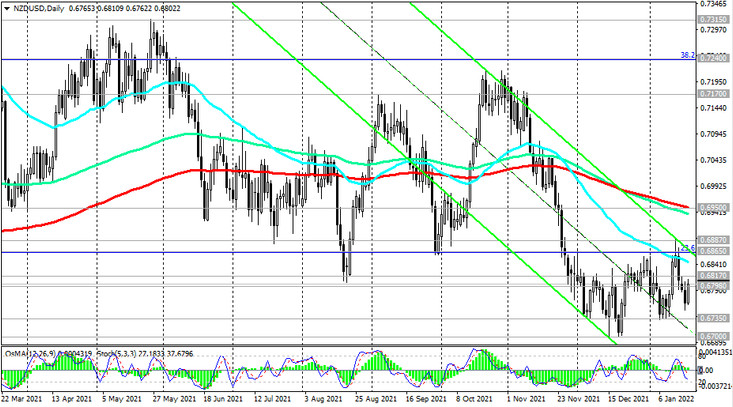The New Zealand dollar failed to strengthen after the RBNZ meeting at the end of November, at which the central bank of New Zealand raised the rate by 0.25%.
Against the backdrop of accelerating inflation to a maximum since 2010, the Reserve Bank of New Zealand raised the key rate for the second time in two months (November-October), bringing it to 0.75%. In an accompanying statement, the bank's leaders noted positive trends in the national economy. However, risks of a global slowdown remain due to the spread of the coronavirus and supply chain disruptions.
Despite the increase in interest rates, the New Zealand dollar weakened, including against the US dollar, after the publication of the Reserve Bank of New Zealand's short-term interest rate forecast, which fell short of market expectations. RBNZ leaders are now set to take a wait-and-see approach to assess the impact on the economy of the interest rate decision, and this seems to have disappointed investors. Usually, an increase in the interest rate has a positive effect on the quotes of the national currency. However, in this case, the reaction of the market was the opposite. The NZD declined shortly after the publication of the RBNZ decision to raise interest rates. The conclusion suggests itself that this increase was already priced in, and the restrained position of the RBNZ management regarding the further prospects for monetary policy disappointed investors.
Moreover, the market is assessing the possibility that the Fed during the March meeting may raise its key interest rate at once by 0.50%, and not by 0.25%, as expected earlier, and then several more times this year. If the tightening of monetary policy goes at this pace, then the Fed will overtake other major world central banks in this process.
The New Zealand dollar is also negatively affected by the dynamics of the country's GDP. There was a fall in GDP in the 3rd quarter by -3.7% (after an increase of +2.8% in the 2nd quarter of 2021). Data for the 4th quarter will be published in mid-March 2022, and here, too, economists do not expect strong growth.
However, today the NZD/USD pair is growing, mainly due to the weakening of the US dollar. The macroeconomic statistics released the day before from the US was distinguished by a sharp drop in the index of business activity in the manufacturing sector of the New York Fed. In January, this figure fell to -0.7 from 31.9 in December. However, economists believe that this fall will be short-lived. The weakness that companies are seeing is due to temporary factors that are not enough to undermine further growth. The sharp drop in the New York Fed manufacturing index in January indicated a short-term decline in activity caused by a wave of omicron-strain infections, rather than the beginning of a downtrend in the industry. Labor market indicators signal that companies have continued to create jobs.
Meanwhile, the fall in the dollar, which we are seeing today, is significantly offset by the growth in the yield of US government bonds. Today, 10-year bond yields hit 1.897%, in line with 2-year levels, while 2-year Treasury yields rose to 1.026%, the highest since February 2020. Yields on short-term Treasury bonds are very sensitive to expectations regarding the Fed's interest rate hike, and now it is the best indicator of the mood of market participants regarding the prospects for monetary policy.
In turn, the New Zealand dollar received support after the publication last night of positive statistics on retail sales using electronic payment cards. Sales continue to show strong growth, up 4.2% in December from 2.9% (yoy) in November.
Accelerating growth in prices for dairy products also has a positive effect on NZD quotes. The Global Dairy Trade (GDT) Dairy Price Index released on Tuesday, which gained 4.6% over the past two weeks, well above the 0.3% in November, also provided moderate support to the New Zealand currency. A significant part of New Zealand's exports are dairy products, primarily milk powder. Therefore, the increase in world prices for dairy products has a positive impact on the NZD, increasing the level of receipt of export foreign exchange earnings in the country's budget.
Given the rise in prices for commodities and for agricultural products in recent times (especially for dairy products, which are the most important component of New Zealand exports), a strong weakening of the NZD and a fall in the NZD/USD pair should still not be expected, unless the Fed announces an unexpected increase in strong measures to tighten their monetary policy.






